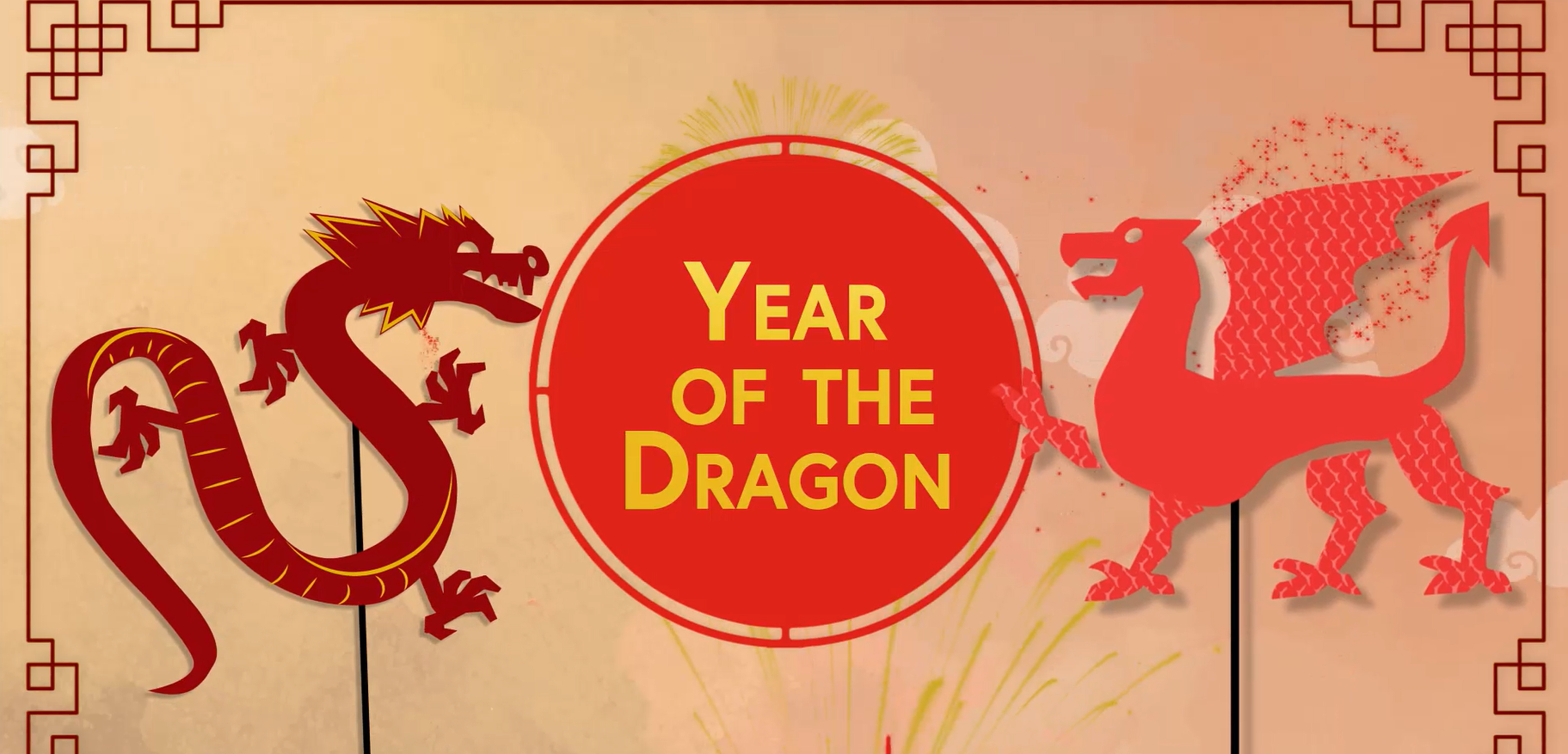2024 - Chinese Year of The Dragon
What Chinese New Year means to the aerospace industry

Chinese New Year has a very long history that is steeped in tradition. Also known as the Spring Festival or the Lunar New Year, it has gone by many names over the past more than 3,500 years, with the festival dates shifting annually depending on the lunar cycle. It is the biggest and most important festival for Chinese families to come together and celebrate.
In a nation covering 3.7 million square miles with extremely diverse terrain, from lowlands and coastal regions to the highest mountains, plateaus and deserts, this time of year involves a lot of travel to hometowns to visit loved ones and mark the occasion.
With the 2024 celebrations kicking off on 10 February, this article explores the significance of Chinese New Year, particularly in terms of its impact on the aviation industry. It also considers the significance of this year’s zodiac animal, the dragon, a creature identified with by those based at STG Aerospace HQ in Wales, a nation represented by a red dragon.
Domestic travel during the Lunar New Year
National media has predicted around 9 billion domestic trips will be made in China during this year’s celebrations, which Reuters describes as an annual period ‘of mass migration’. If the prediction is correct, it would represent almost double the 4.7 billion trips made during the 2023 festivities.
There is a central week to Chinese New Year celebrations, however, the wider festival – and golden domestic tourist travel period - lasts around 40 days. 2023 saw a reopening of travel post-pandemic and McKinsey reported that domestic travel spend rebounded to around 70 per cent of pre-COVID levels, so could 2024 represent a full return to business as usual?
Whilst the majority of New Year travel is expected to be on roads, some rail tickets are already hard to come by. It is predicted that for air travel, there will be around 80 million passenger trips during the Lunar New Year travel season with airports bracing themselves for the crowds. According to Reuters, this would represent an almost 10 per cent increase on 2019 levels. As well as booming domestic demand for flights, the Lunar New Year also tends to see a peak in international travel, particularly to Asian destinations. In preparation, more than 2,500 additional international flights have been scheduled including to South Korea, Japan and Southeast Asia.
The significance of Lunar New Year celebrations on China’s aviation industry, and economy in general, is profound.
Traditions old and new
For many, preparing for the Spring Festival starts weeks before the celebrations begin, with people cleaning and decorating their homes. Red lanterns are traditionally put up in the home and public places as well as decorative fish, signifying abundance. Natural decorations include fruit blossoms, particularly plum and peach.
Red is a symbolic colour of the festivities, symbolising joy, virtue and sincerity, and is prevalent in decorations. Chinese mythology tells of red being a colour that frightened the fierce monster Nian, along with the noise of fireworks, another part of Chinese New Year celebrations. Red envelopes containing money are traditionally given to children by older people to bring good luck.
Bright and visually stunning dragon and lion dances are also a key feature of festivities.
The year of the dragon
It is well-known that each Chinese New Year heralds a new symbolic animal on a 12-year cycle. Each animal brings its own qualities and symbols, believed to influence the traits of children born in that year. With the close of 2023, the Rabbit will hop away and make way for the only mythical creature in the Chinese zodiac, the dragon.
The dragon is an auspicious symbol, representing success, good fortune, intelligence and honour. In the Chinese zodiac, each animal is associated with an element, which shifts each 12-year cycle. In the 2024 cycle, it is the year of the wood dragon. This combination is believed to make those born in this year energetic, innovative and with the drive to change the world, with some families deliberately choosing to have a child in this year. Whilst a mythical creature, its influence remains powerful.
Many miles from China, a nation covering just a little more than 8,000 square miles, also finds representation in a dragon. For Wales, where STG Aerospace is headquartered, the connection to a red dragon has various potential origin stories. One of which involves the magician Merlin who, as a boy, told the Celtic King Vortigern the reason his castle foundations kept falling was due to dragons sleeping underneath. Awoken, a fierce battle between a red and white dragon ensued with the red dragon ultimately victorious.
The dragon is believed to have been adopted by Welsh kings in the fifth century to symbolise their authority following the withdrawal of the Romans from Britain. It later became known as the Red Dragon of Cadwaladr. It was at the time of Henry Tudor that the modern Welsh flag was created, and whilst its popularity has come and gone over the centuries, it resurged in the twentieth century, with the symbol of the dragon now proudly embraced and displayed nationwide.
Whilst the dragon’s symbolic origins in Wales do not hark back as far as in China, and its mythology is not as profoundly and culturally rooted, the significance of the dragon is powerful in Wales and closely linked to national identity.
As celebrations are held across the globe to mark the start of the 2024 Lunar New Year, embracing the spirit and powerful symbolism of the dragon at STG Aerospace, we wish everyone marking this special time a happy Spring Festival and a prosperous 2024.
